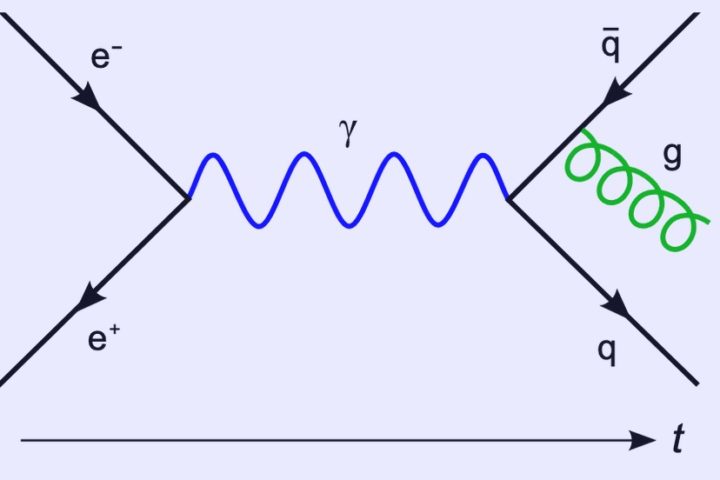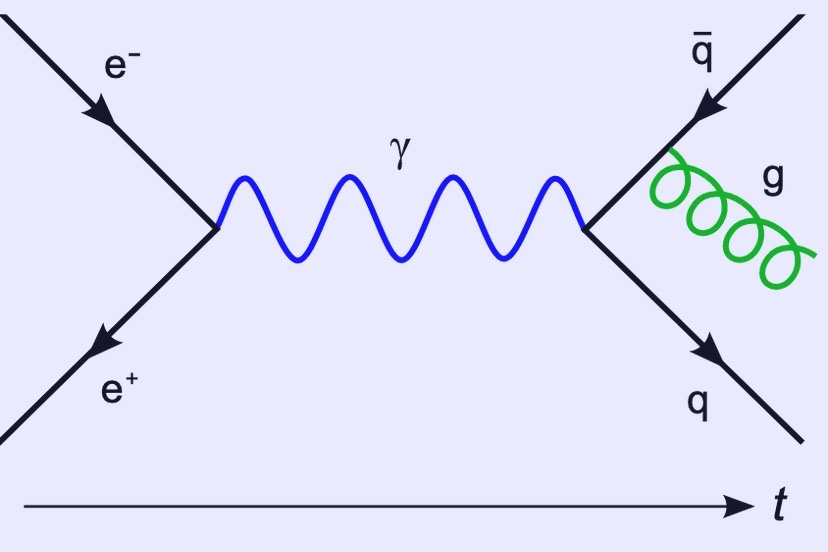Because of your coverage of particle physics, I thought your readers would want to know a research team from my university has joined the ALICE experiment at CERN’s Large Hadron Collider. They’ll observe “fine features of the glue that binds quarks and gluons together, to understand fundamental questions such as why quark and gluons are never found as free matter waves.”
— email from the University of Kansas to the Daily Post, November 3, 2020
This note from KU Public Affairs Officer Brendan M. Lynch accompanied a press release about KU associate professor Daniel Tapia Takaki, who created a new research team to “exploit the unique opportunities to research physics at high energies available at the ALICE experiment at the Large Hadron Collider (LHC).” You can read the full article here in the Daily Post, if you missed it yesterday.
Mr. Lynch’s article includes this information:
“We’ve been preparing experiments to observe fine features of the ‘glue’ that binds quarks and gluons together, to understand fundamental questions such as why quark and gluons are never found as free matter waves – a phenomenon called confinement,” Tapia Takaki said.
I hadn’t been aware that the Pagosa Daily Post featured coverage of particle physics, but I’m always willing to be surprised by our magazine contents. I did mention “particle accelerators” in an editorial back in 2015. And we published a photo of a statue on the CERN campus, in an article this past September. The $7.5 billion Large Hadron Collider is part of the CERN research complex in Switzerland.
For readers who (like me) have not been keeping up on the latest research into particle physics, here is a diagram from Wikipedia that might make things more clear:

A Feynman diagram showing the radiation of a gluon when an electron and positron are annihilated. The annihilation produces a Gamma ray photon (wavy blue line) which in turn disintegrates into two quarks and a gluon. The arrow at the bottom marked ‘t’ indicates the passage of time.
Many physicists subscribe to a set of theories about the sub-atomic universe and its behaviors, known as the Standard Model, and — if I understand the Standard Model correctly — an atom’s nucleus is thought to consist of positively-charged protons and non-charged neutrons. Because a positively-charged particle will repel another positively-charged particle (the way the north pole of a magnet repels the north pole of another magnet) — scientists had to come up with a theory for how a bunch of positively-charged protons could hang tightly together in an atom’s nucleus… so they theorized some ghostly particles called “gluons”… and endowed them with “zero mass” and the amazing power to glue an atom’s nucleus together… but also theorized that these ‘particles’ have no power, and perhaps no existence whatsoever, outside of the nucleus.
Mr. Lynch’s article fits right in with one of our consistent themes here at the Daily Post. “What is the glue that holds everything together?”
This past year, it seemed like everything, and everyone, was coming unglued. The economy was coming unglued. Politicians of all stripes were coming unglued. Our healthcare system was coming unglued. Our oil and gas industry was coming unglued. Our relationship with the country that manufactures most of our inexpensive consumer items — China — was coming unglued.
We really “know” nothing at all about gluons and quarks, in the same sense that we “know” about the everyday elements of our lives. The smell of bread in the oven, for example. The feeling of acceleration as we make a right turn onto Highway 160. The sound of a county commissioner voting “Aye” to put us deeply in debt for an oversized jail facility. The joy of seeing a FEDEX package on the porch.
My question, to explore this morning, is “What is the glue that holds a community together — or a marriage, or a family — and why does the glue seem to fail, in certain situations?”
Yesterday, along with the KU press release, we ran an essay by Hilary Dumitrescu entitled “Gather Round the Table.” Ms. Dumitrescu proposes that the hectic pace of modern American life is a key part of the ‘ungluing’ we are currently experiencing — the problems of polarization, blame, division, and an almost unbearable lack of communication, and of compromise.
In our rush to do what’s next, we’ve sidelined the table. The results are disastrous and widespread — even reaching Congress. In their book Slow Church, the authors John Pattison and Chris Smith hypothesize that one of the reasons Congress is so divided and, consequently, ineffective is that they do not make effective time for socializing and relationship building, favoring instead to treat their Washington, D.C. offices as a commuter stop in a nonstop whir of activities and cross-country flights. “This is a portrait of a deeply dysfunctional workplace,” say the authors. “If we don’t have time to share meals and nurture friendships, even with our coworkers, we have ceded too much ground to the cult of speed.”
Perhaps (with tongue firmly in cheek) this drawing of atomic particles disintegrating, can service equally well to suggest the apparent breakdown of our social institutions?
Although I’m not quite clear what the green, spiraling shape at the far right would symbolize.
No one, I presume, wants to live in a divided, hostile, disintegrating world. If scientists can spend $7.5 billion to track the disintegration of particles no one can see, feel, hear, taste or smell — that is to say, particles which are, in fact, theoretical — I’d like to see us make at least an equal investment, and effort, to heal the divisiveness and hatred that currently plague our nation.
Could the solution be so simple, as Ms. Dumitrescu seems to suggest, as the restoration of shared meals around a shared table? And shared conversation, and shared listening to one another?
Assuming of course, that we all wash our hands first, before we sit down. That’s important.

